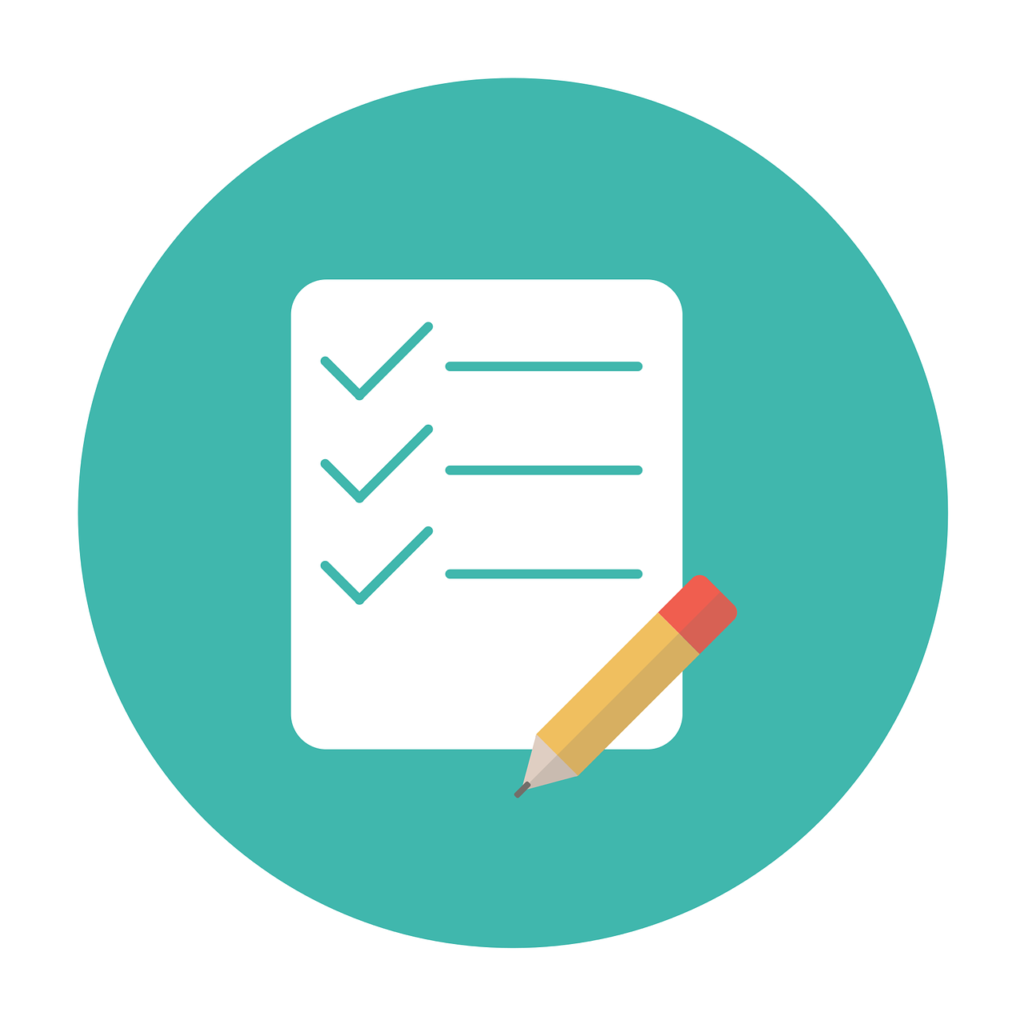What is Negotiable and Non-Negotiable?
When I talk to other teachers and parents about this concept it is actually very simple. What are the things that you are willing to let go of and what are the things you’re not. The reason we have expectations and rules within a classroom is so that students are able to learn, they feel respected, they know the guidelines and they are able to be safe while learning to make good choices. So for example, during math stations a negotiable is that when students are finished an activity they can then make the choice to move to another one. A non-negotiable is that if students are not completing the math activity then they may miss out on IPads. Now, this obviously comes with some factors, in that you have to know why a student isn’t completing work. Could it be that they’re distracted? Or that they are unsure of what to do? In this case, we are not providing consequences but instead we are finding a way to support them to finish their station. This can come in many forms such as you help them, an EA helps them, or even another student helps them. Similarly, when a student is completing their work earlier than the time you’ve allotted you need to ask yourself whether the work is challenging enough for them? The premise is that students should be able to be independent in this work but this isn’t filler work, it needs to have a specific purpose. Another negotiable is having students work together. Although this time is technically independent time (unless they’re playing games), I think that it is important for students to learn from one another and to work together. So my negotiable is that students can absolutely work together but my non-negotiable is that they have to have their own representation of their learning. This would come in the form of a morning math sheet where they have worked in their group to complete the sheet but each has filled out their own sheet with the information.
The reason I choose to think of rules and expectations as negotiables and non-negotiables is because I know as a teacher and as a person what I am willing to let go of and things I am not. For example, one thing that I am very particular about is students noise levels. When I have a group of students who are working with me, I expect and will not negotiate on the other students noise level within the classroom. My rule is that we keep low volumes and you get 2 warnings about volume. I explain that this is not because I am trying to be mean but it is a form of respect. When students are working with me, this is their time to get personalized help with their skills. So as much fun as it may be to be laughing loudly etc. it is important for students to learn that they are not the only ones in the classroom. This is a key factor in building respect within our classroom. I will often let students know that I am doing an interview with a student which is a hint to them, that they need to be mindful of their voices because eventually it will be their turn. When you think about classroom management and stations in a negotiable vs. non-negotiable way it outlines for you and your students what your expectations are. A negotiable can even sometimes be that students who are at a lower level in math or a higher level in math, they can adapt a game to make is more difficult or simple. That is teaching them to advocate for themselves, to make good choices and to have their own autonomy.

Negotiables vs. Non-Negotiables With Classroom Management
I am of the very firm belief that students need to understand that their are consequences for their actions. Now, many people may disagree with me and that’s okay. However, in my 5 years of teaching and helping in other classrooms, I have learned that when you teach students that consequences are a natural thing in life it actually makes them more understanding of the world around them. This is not a form of punishment but it is a fact of reality. Again, consequences come down to your negotiables vs. non-negotiables. When your students are clear what your expectations are and what you are not willing to negotiate with they will, most of the time, respect those boundaries. It is very important to set boundaries for your students and thus, they should set boundaries with you. This is part of building healthy relationships. An example is students who like to hug you and student who don’t. You never force a student to hug you, you can ask if they want a hug, they can ask you if they can have a hug and if it never comes up, then you assume that they don’t want one. This is them demonstrating for you, their negotiables and non-negotiables.

In terms of classroom management, when you have your negotiables and non-negotiables solidified in your mind and you have shared them with your class (preferably in a rules anchor chart or some type of visual reminder) you will also need to determine the consequences when boundaries are crossed or non-negotiables are broken. Now, there needs to be some wiggle room here. For example, depending on the time, if my students voices are slightly louder than I’d like, I would give them a reminder but I am also looking to see if this noise is on task noise or not on task noise. Again, reminders always come first, then consequences follow. A consequence during stations could simply go like this.
A student is at a literacy center and they are choosing to talk instead of completing the task. I provide a reminder, possibly provide one more but given that the stations have shorter time limits I generally give them only one. Then there are several routes I could take. One could simply be, asking the student to take their stuff to another table. This gets the student away from the other student. Another one could be “you chose not to do your work even after I reminded you. Is there a reason you didn’t finish it? (given students respond determines your action) Often times students might say, I was distracted or I don’t know. With this answer I would respond with “I understand that you were distracted, but you didn’t get your work done. So please put on some noise cancelling headphones to help you focus. I need you to complete your work first and then you may move to your next station when you’re done.” I like this consequence because although my non-negotiable is finishing their work because there’s a purpose to it, I am providing the student with a fair consequence that meets both our needs. It’s simple, when they’ve done that work that was expected of them then they can move on to the next one. I am not punishing them or demeaning them, I am simply giving them a way to meet the expectations I have set. Other things might be a bit more harsh in that you take away a station that they simply cannot handle.

I think the key when it comes to consequences is that it needs to be fair, it should reflect the severity of the students actions and it should be something simple enough that you can enforce on your own. It is also important that when we provide consequences that we remind the students that they are not bad people for making a bad decision but that next time to avoid the consequence they need to be mindful and strategic about getting their work done. I hope that this is all making sense. The basic structure of this is to show them the black and white outlines of what you’re expectations are and things that you’re simply not willing to accept. One of my biggest pet peeves and my students know this, is talking over someone else or calling out. Although this may not be something that other teachers care about, I think that it is extremely rude to talk while another person is talking and I simply can’t handle it when students are constantly calling out. I always take the approach of talking to my students as humans not just kids. They are capable of amazing things so when I talk about students calling out of turn or talking over top of people, I tell them how much it annoys me. I tell them that I grew up with four other siblings that that when they would talk over top of me not only did it make me angry but it hurt my feelings because I had something important to say and by them talking over me, they were essentially telling me that they didn’t care how I felt. I always think that when you explain your reasoning for your non-negotiables it allows the kids to get to know you as a person and it gives them some background information on why this bothers you. Now, this doesn’t mean we have to take hours and explain everything. We walk in a classroom because it’s a safety issue. I tell them I simply don’t want them to crack their head open or break any bones so we walk, simple as that.
How To Get Your Students To Meet Your Expectations Or Non-Negotiables
It is very important that after you’ve explained your non-negotiables or expectations that you actually provide your students with ways to meet them. Again, this seems like common sense however, the most common two reasons that I have seen when students aren’t meeting these expectations is either because you, as the teacher, haven’t been consistent or you haven’t provided them with the tools in order to meet your expectations. This might sound daunting but it will save you tons of time and tons of irritation. Majority of students want to make you happy so give them the ways in which to do this. This can come in a few ways and it’s going to depend on your students.

Possible Reasons:
- You’re not being consistent.
- They don’t have the tools.
- They need more scaffolding.
Or you’re not clear on what you’re doing. This is not to put anyone down but sometimes we as teachers don’t like to admit that we may not know what we’re doing. The thing to remember here is to ask yourself what’s the purpose of your expectations or you need to ask for help.

If you’re not being consistent then you either need to choose to be more consistent or it could be that what you assumed was a non-negotiable actually is a negotiable. If your students don’t have the tools then you need to break it down for them. We will go with the raising hands example again. If you’re students aren’t raising their hands then you need to remind them before you start your activity that they must raise their hand. Do not allow someone who didn’t meet this expectation to call out and then use their answer. You can give them non-verbal cues such as putting your finger to your closed lips and raise your hand. IF the student then corrects themselves and raises their hand to speak, you then can call on them and say “thank you for raising your hand”. You’ve now given them the tools by reminding them at the beginning, non-verbally communicating how to meet your expectation and you’ve rewarded them because they’ve corrected themselves on their own. A note I want to make here, is that we do not reward students for meeting expectations because they are in and of themselves expectations we. However, praise them and celebrate when they meet these expectations verbally by saying “thank you for _____”. But, I am not going to give out a lollipop because they raised their hand.

When you’re doing something such as stations or a whole group activity you have to remember that students have to learn routines first. This means that you have to break it down for them. If you’re doing stations then you need to teach each station to the whole class and practice first before you start to add in any others or even learn how to rotate between them. Yes, this takes time but if you’re clear and you’ve set your expectations and allowed them to practice, then this will go quicker. If you’ve got a group of student who really struggle to meet your expectations then you need to go slower because eventually majority of the group will fall into routine because it easier and more rewarding than going against the routine. A phrase I like to use when scaffolding is “If you know, then show me.” This is referring to the fact that I have gone over the rules and expectations so many times and we have practiced so many times that if they know what to do, then show me that you know what to do. Side note: sometimes students will ask me why do we have to keep going over the rules? My response is because until you all show that you know what to do, we have to keep repeating them. This is their way out, when majority of the class can do it on their own then you will only have a few outliers and those are the students that you will need to scaffold more for and provide more tools to.

This is probably the least favorite of most teachers. Many people believe that teachers come out of their PDP programs and know everything and are ready to take on any class. This is the most false myth I have encountered. This isn’t to say that no teachers are ready, it’s honestly different between everyone. But most of teachers I have mentored, struggle in their first year or two. Please understand that this is so common and nothing to be ashamed of. In fact, use this as you’re way of being a sponge to other teachers. It sounds silly, but we really have to be life long learners because classes always change, curriculum changes, assessment changes, our profession is one that is always changing so you either keep up and be a sponge or you continue to struggle. So, if you are struggling, reach out to someone in your school and ask them if they can come in and observe you. Or ask them, “what do you do when ____ happens?” You may not agree with what they do but you now have an idea of where to start. When you have a teacher observe you, they will pick up on many things and this is not to bring you down but it could very well be the fact that your not being consistent or that your kids don’t actually know what to do during stations. This is a great way of figuring out why (if you don’t know) you’re kids aren’t able to be independent. If possible you could also go into another teachers classroom and observe them and see how they implement the skill that you’re struggling with.

Final Thoughts:
If you’ve stuck through this post with me I appreciate and I hope that it helps. Classroom management is not easy, but the more you practice the better you’ll get. I understand that at the beginning of your career, it’s hard. I am still at the beginning and still learning every day. I always ask for help and I always see what others are doing. This doesn’t mean that I do what everyone else does and you don’t have to do what I do. However, I do think that when it comes to classroom management many people feel overwhelmed so the simpler you can make it hopefully the more successful you will be. In my first year, I went over rules so many times, not just for the kids, but for myself because there are SO many things to remember.